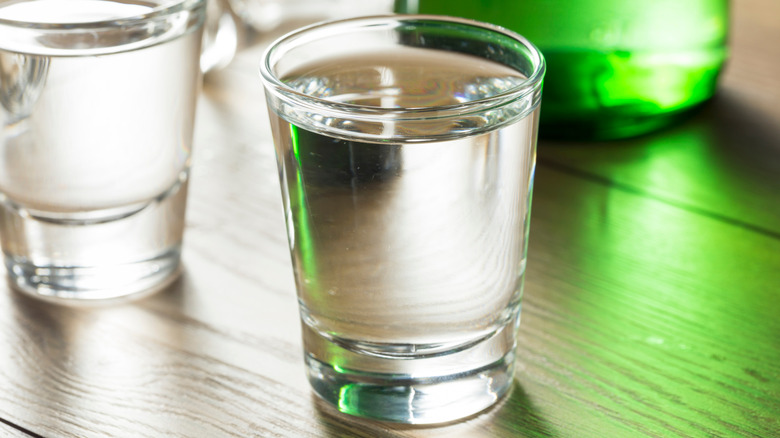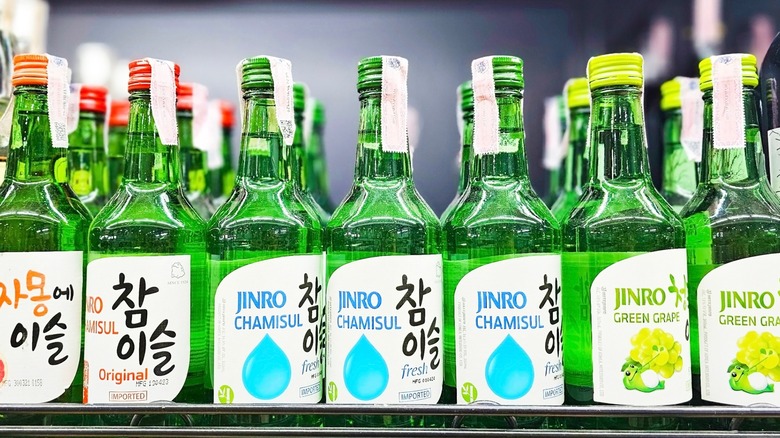The Big Myth Everyone Believes About Soju
Soju, a beloved fermented alcoholic beverage originating from 13th century Korea, is revered similarly to sake in Japan. Known for its crisp flavor and smooth finish, soju (derived from Sino-Korean characters "So," meaning "to burn," and "Ju", meaning "alcohol") is a cultural staple, often enjoyed with meals or at celebrations and offered in various fruit flavors like peach, blueberry, and watermelon, which have sparked significant global interest. Traditionally made from rice, barley, or wheat, modern soju includes variations with sweeteners and other grains, making it versatile for any palate. Modern soju's low alcohol by volume (ABV) of around 12-20% has become synonymous with approachable, everyday drinking.
However, many fans don't realize soju is far more than the mild, green-bottled beverage they're familiar with. According to Julia Mellow, Sool Specialist and Founder of The Sool Company, a business dedicated to promoting Korean alcoholic traditions, "soju is a distilled spirit category like gin or vodka." As Mellow points out, the belief that soju is light on alcohol oversimplifies a centuries-old spirit. "There are two strengths of soju, table and spirit strength," she told Mashed. "Table strength is under 25% and spirit strength is usually 40% and above. Both categories are very different in how they are enjoyed, with spirit strength needing to be approached more like other high-proof spirits."
Debunking misconceptions about soju
Table-strength soju from brands like Jinro dominates the international market as the best-selling liquor in the world, reinforcing the idea that all soju is light and easy to drink. Yet spirit-strength soju is enjoyed neat or as a base in cocktails, like the soju martini. Soju is often characterized as a beverage with a low ABV because of the difference between Korean and Western drinking cultures. While Westerners tend to drink alcohol quickly and without food, in Korea alcohol is enjoyed leisurely alongside long meals. Table-strength soju, in particular, is well suited for settings where individuals can enjoy the drink casually for longer periods.
Adding to the misconceptions about soju's strength and use is the iconic green bottle, which many consumers associate with all soju. While most table-strength soju comes in this familiar green packaging, premium spirit-strength soju such as Hana Soju 60 is often presented in elegant, clear glass bottles. Although consumers may assume soju's mild taste and popularity in casual drinking settings make it fundamentally weaker than other spirits, this view ignores the fact that soju's versatility — ranging from cocktails to sipping — is a testament to its craftsmanship and diversity.

